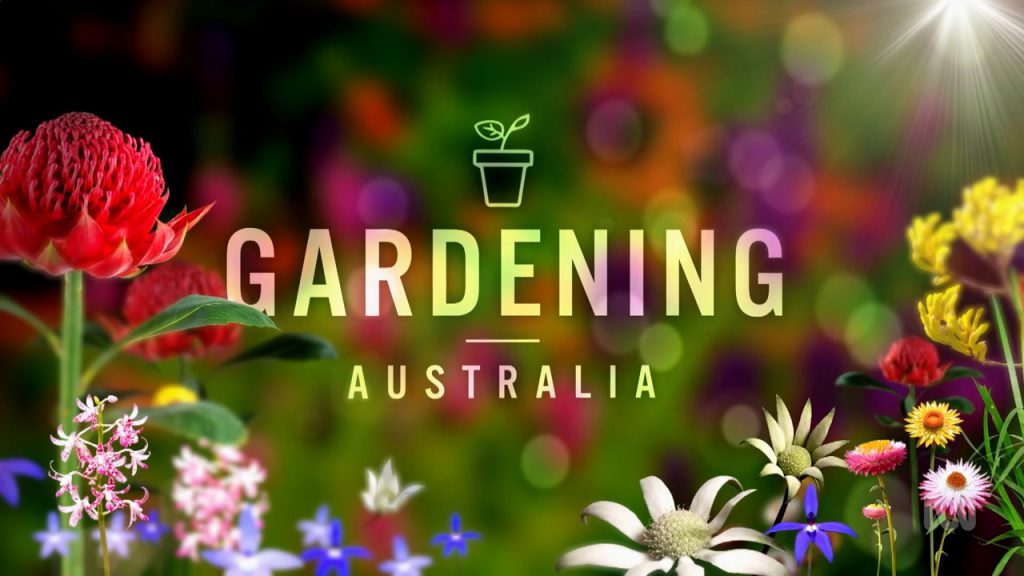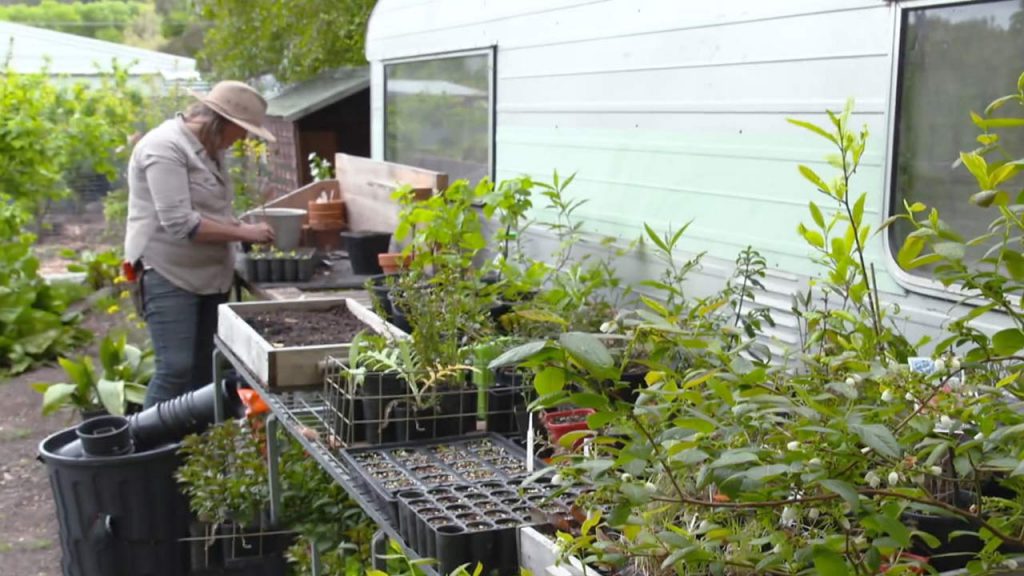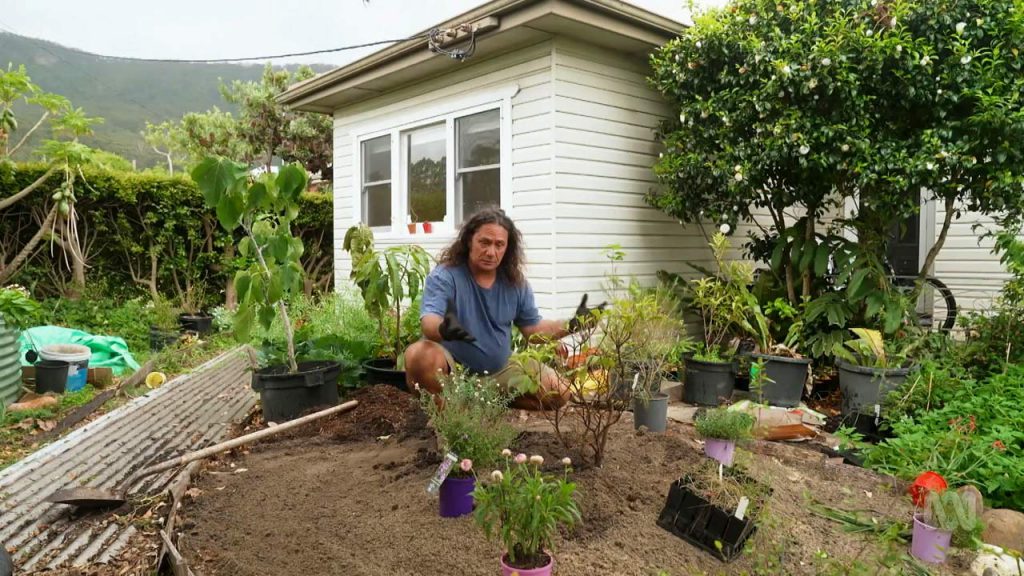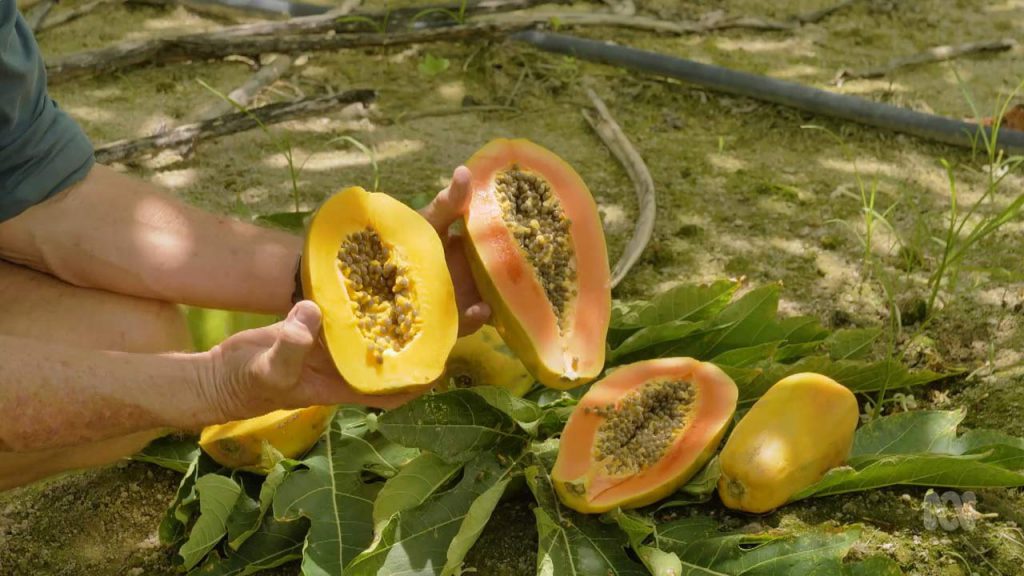Gardening Australia episode 28 2022: Costa meets up with a turf technician; Jane visits a production nursery; Sophie learns topiary technique; Jerry visits a cloister garden; Hannah pots up food forests combinations; we meet a florist farming her own flowers.
Inspiring, entertaining and full of practical advice, join Costa Georgiadis and the team as they unearth gardening ideas, meet avid gardeners and look at some of the most inspiring gardens from across the country.
Gardening Australia episode 28 2022
Laying Down the Lawn
Neil knows a lot about lawns and has been in the turf business for decades. “I love to sit on it, look at it, mow it, lay around on it, throw the ball with the dog.” says Neil. Not long ago, he was on the program sharing an essential guide for lawn maintenance. Today we are doubling down on the practical essentials of lawn care. This time, giving you all the tips you need to lay a little lawn.
The best time to lay a lawn is in autumn and spring. You can lay turf in summer, but the summer sun is very hot and so regular irrigation is critical. There is a lot of variety in types of lawns. Broad-leaved varieties include buffalo and kikuyu, the fine-leaved varieties include couch grass and zoyzia. Growing from seed you can use ryegrass and fescue, even native varieties such as microlaena. However, Neil warns “it is quite difficult to establish a lawn with seed, it takes a lot of time and a lot of care.”
The 10m x 2m practice patch in Neil’s front yard was originally couch grass which suffered due to the southerly aspect providing too much shade. The back of Neil’s house faces north and receives the most sun, whereas this front patch is shaded by the house. Paying attention to aspect is key when choosing a lawn. Neil says he chose buffalo for this patch because “buffalo varieties don’t mind a bit of shade.” Other varieties that manage well in shade are ryegrass and zoyzia.
Where Did I Come From?
Jane visits a prolific production nursery to learn about the steps behind propagating and preparing plants for retail sale at your favourite plant shop. Before your new plant reaches the retail nursery, they grow up in the care of specialised growers. Clive Larkman is a horticulturist and nursery owner who propagates plants before they head to wholesalers and retailers. His family business grows 3.5 million plants per year across 3000 different cultivars on two sites in Victoria.
He says, “About 50% of our production is cutting grown, about 40% seed and about 20% tissue culture.” Cuttings come from established plants on site. “If you don’t get good stock plants you don’t get good cutting material.” Taking regular cuttings means the plant always has lots of young growth, which has a better strike rate than older branches. Whilst that’s one thing that can be controlled, he says there are a lot of more complicated variables in the process. “It is a lot of learning, a lot of record keeping and a lot of observation when you take the cuttings… it’s an art, a science and a bit of luck.”
Clive grows lots of different succulents which have a high strike rate but there are different methods for different species. For example a rhipsalis is grown from a small cutting placed directly in propagation mix, whilst echeverias are grown from single leaves left on a tray with no water or soil until new shoots and roots form.
Zen Topiary – Gardening Australia episode 28 2022
Craig Sullivan is a specialist in topiary and cloud pruning, whose work provides a stunning contrast to the rolling hills and wild bushland of this part of South Australia. Craig explains his practice, ‘topiary is about shaping plants. It can be a formal attribute to a garden, or simply something fun; but for me it is about creativity.’ He takes Sophie on a tour of the garden of one of his clients, where you can see his imprint on hedges all around, and how they transform to shape the space over time. As they mature, the simple shapes can grow into each other, creating unified forms. This is the ‘rolling ball’ form of topiary, which is low to the ground and contrasts the more complex forms of cloud pruned plants.
Cloud pruning is ‘exposing the structure, stripping back the branches, exposing twists and bends, creating pads at the end (of branches). You are letting air and light into the plant and it looks like they are striking a pose.’ This method is known as ‘niwaki’ in Japan, where the technique originated.
While he has turned westringia into topiary, and cloud pruned feijoa trees, the majority of his work is shown on buxus and conifers. Craig explains, ‘they are very hardy, can take a good deal of different conditions, but kangaroos and sheep don’t eat them, which is the main reason I have so many of those plants here.’ He explains that you need to consider the type of topiary you are aiming for when selecting the plant that you work with.
Prayers Answered
We’re in Gordon Park, a northern suburb of Brisbane. It’s not on the typical pilgrim’s itinerary for divine inspiration, but it’s here a remarkable garden finds revelation in one of the oldest traditions of gardening.
Retirees Ailsa and her husband moved to the site after downsizing from a larger property. “I’ve always loved gardening, and we came from a large garden. My husband bought a work shed-so I decided I wanted a garden”. To help with her calling, Ailsa enlisted garden designer Phillip O’Malley. The approximately 300sqm, sloping corner site sits at a high point in the land. Most of the block is occupied by the house, but the south/west facing area at the front of the house offered room for something heavenly, and this is where Aisla and Phillip built their garden.
“One of the first things we did was to raise and level the garden space, to fit the garden in evenly”. The defining framework of the garden is a formal, circular, clipped hedged parterre with sandstone paths radiating from a central fountain. “Ailsa’s a good gardener” says Phillip. “It’s her garden. Good design is about that”.
Phillip says the key to recreating a European garden tradition in subtropical Brisbane was using a limited planting palette that was “simple but strong” as a base. “It’s like the line of a dress or shoes, you want it to have good bones”. The clipped, low hedges that define the space in are Japanese box; “it performs well in south-east Queensland, Dutch or English just die. You can clip it so you get the tight, formal look. Formal doesn’t have to mean French formal”.
Cleaning and Storing Garden Tools
Millie shows her system to give tools some much needed TLC. It is important to store tools without too much dirt and mud caked on to them, though that is the nature of their use in the garden. Try to remove as much dirt as you can from the metal parts of shovels and spades before storage.
Oil can provide another layer of defence for metal and wooden tools, against rust and rot respectively. For an easy and efficient application of oil to the surface of tools, mix mineral or grapeseed oil into a bucket of sand. You want it to appear wet, but not absolutely soaking. Dig your shovels and spades into the oiled sand to coat well while also utilising the abrasive nature of the sand to remove any caked-on dirt. You can also store hand tools in this mixture to protect them from the elements long-term.




